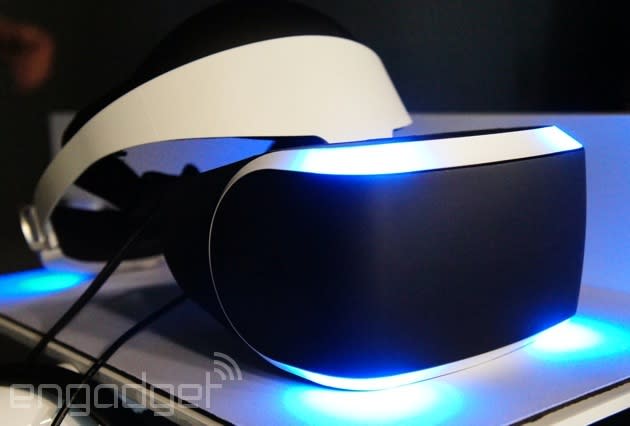Sony's Shuhei Yoshida loves that Facebook bought Oculus, says it helps validate PlayStation's efforts

"I woke up that morning and saw the announcement," Shuhei Yoshida tells us, remembering the day Facebook acquired Oculus VR. "And I was like, yeah!" Yoshida laughs and thrusts his arms in the air like an excited child. "For me, it was a validation for VR." As head of Sony Computer Entertainment's Worldwide Studios, virtual reality (and Sony's Project Morpheus) has become important to Yoshida. He wants to see it, as a medium, succeed.
"We meant to validate Oculus by announcing Morpheus, and the Oculus guys knew what we were working on. I think they were waiting for us to make the announcement, so it would be Sony and Oculus together," he explains backstage at the Computer History Museum in Mountain View, Calif. "But now Oculus being acquired by Facebook is helping to validate our efforts." It's big-picture thinking. Yoshida already liked the idea of Sony and Oculus calling attention to each other's efforts, but adding the Facebook name to the mix broadens the duo's exposure. "More people will know about VR!"
Oculus being acquired by Facebook is helping to validate our efforts.
Mark Zuckerberg's vision for the purchase intrigues him too. "Mark said he believes VR can be the next platform after mobile," Yoshida says. "That's big thinking, and kind of excites our thinking." Sony's team has already been exploring uses for VR outside of traditional gaming, he explains, but nothing as broad as Zuckerberg's statements. "We've thought of doing virtual travel or something, but talking about a new platform? What does that mean?" Yoshida says it's given him something to think about.

Of course, a broader platform for VR means the technology will see more use -- and that technology still has several usability hurdles to conquer. "VR of the past, including our own prototype, has been very difficult to use in terms of getting headaches and becoming nauseated," he says. "Those early prototypes had larger latency and the positional tracking may not have worked as well. I feel really sorry for people developing VR stuff! They have to test it! With the kit we have now, what we demonstrated at GDC; I think it's the first time we can really provide developers with something and say, 'You can use ours, and you'll be alright.'"
Sony's been talking to medical professionals about overcoming simulation sickness, Yoshida explains, and wants hardware to be comfortable and usable without adjustment. "The Oculus DK1 has lots of adjustments available, but the Morpheus just works, the optics design. We'll continue to improve it." Eventually, the company wants to create guidelines for how old users should be, and how long they should use it for, but it's not quite there yet. Even Yoshida admits he hasn't spent extended periods of time in virtual reality, usually keeping his sessions at under 10 minutes.
The Oculus DK1 has lots of adjustments available, but the Morpheus just works.
Yoshida's plan for building those guidelines relies heavily on collaboration. "We need to share knowledge," he explains. "We can't just make the hardware; it's the game applications that need to be designed well. We need time for developers to experiment and find the killer application and, at the same time, we need to learn how VR applications should be designed." Providing the Morpheus dev kit to developers, Yoshida says, is the first step.

